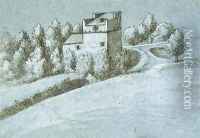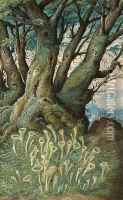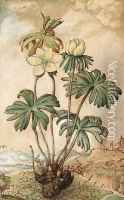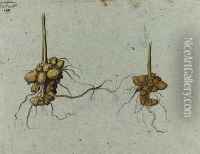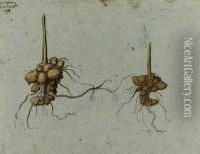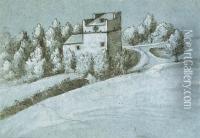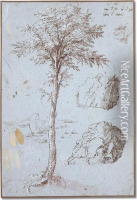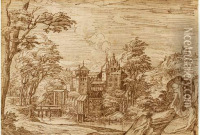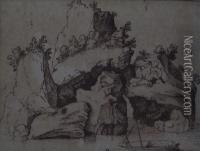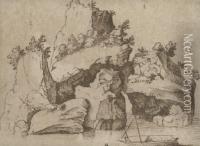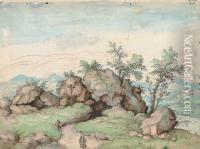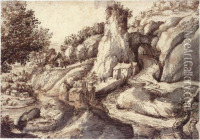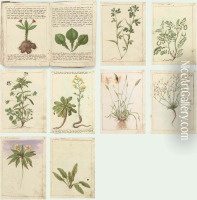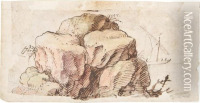Gherado Cibo Paintings
Gherardo Cibo, also known as Hieronymus Cibo, was an Italian Renaissance artist, botanist, and manuscript illuminator, born in 1512 in Genoa, Italy. His life spanned the late Renaissance period, a time marked by significant developments in art, science, and exploration across Europe. Cibo's contributions mainly lie in the realms of botanical illustration and manuscript illumination, where his work reflects a keen observation of the natural world combined with artistic elegance.
Cibo's early life is somewhat shrouded in mystery, but it is known that he belonged to a noble family and received an education that likely fostered his interests in both art and the natural sciences. From a young age, Cibo showed an inclination towards botany, which later became a central theme in his artistic endeavors. Throughout his life, Cibo travelled extensively across Italy, studying plants and landscapes, which he meticulously recorded in his drawings and watercolors.
Unlike many of his contemporaries who focused on religious and mythological themes, Cibo devoted much of his artistic energy to the study and illustration of plants, making him a pioneer in the field of botanical illustration. His detailed drawings of flora not only served as artistic expressions but also as scientific documents, contributing to the knowledge of plant life during his time.
Cibo's work as a manuscript illuminator is also notable. He produced several illuminated manuscripts, which were highly valued for their beauty and precision. These works often incorporated his botanical studies, blending art with science in a way that was innovative for his time.
Despite his contributions, Gherardo Cibo's name is not as widely recognized as some of his Renaissance counterparts. Nevertheless, his work has garnered appreciation among scholars and art historians, particularly in the field of botanical illustration, where his detailed and accurate representations of plant life continue to be studied and admired.
Cibo's death in 1600 marked the end of a life dedicated to the pursuit of knowledge and beauty through the observation of nature. His legacy, although not as prominent as that of some of his peers, remains significant in the history of art and science, serving as a testament to the interconnectedness of these disciplines during the Renaissance.

